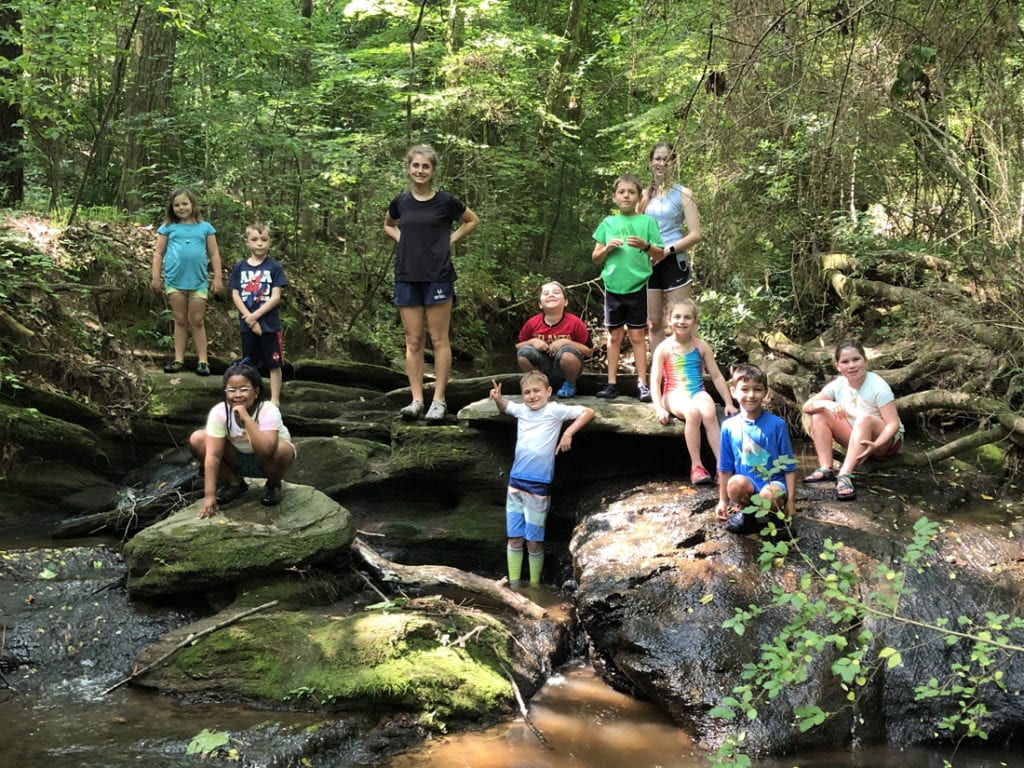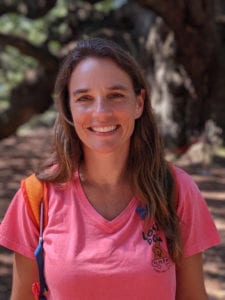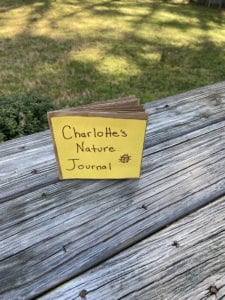A local nature expert shares activities to entice kids outdoors.


After being cooped up inside during the winter months, it’s finally time to enjoy the outdoors. Despite the warmer weather, kids sometimes still need a little encouragement to drop the devices and breath in the fresh air. Holly Loscavio, environmental education director at the Dunwoody Nature Center (and a mom of five), is an expert in doing just that. Here, she shares some fun— and educational—outdoor projects to add a dose of Mother Nature to your little ones’ lives.
Go on a scavenger hunt
Turn an outdoor walk or hike up a notch by adding a scavenger hunt to the mix. One of Loscavio’s favorites is a memory scavenger hunt where you select up to 10 items from nature (think a pine cone, moss, wild flowers) and cover them with a blanket. Lift the blanket and let your kids get a 10-second peek at the items before you unleash them into the outdoors to collect as many of the items as they can remember. For younger kids, have them carry a treasure bucket to fill with interesting items from nature. At the end of the walk, go through the items and explain each one.
Create nature-inspired crafts
Use collected natural materials to create a masterpiece. From decorating a picture frame with moss and pebbles to pressing flowers and making leaf rubbings for cards, there are a multitude of earth-inspired crafts. One popular spring project Loscavio suggests is crafting a bird feeder from a pine cone. Spread peanut butter on the pine cone, sprinkle bird seed on top and hang it from a tree or hook outdoors. The best part is watching all the birds enjoying the treat!

Create a nature journal
Make a notebook your little one can take on hikes and outdoor experiences. Stack two brown lunch bags, fold them in half and staple them together. The open ends are perfect for tucking in leaves found outdoors, and kids can glue white pieces of paper to the other pages for drawing or taking notes.
Build a toad house
Find a shady part of your yard and turn a flower pot with a hole on the bottom upside down or lay it on its side and bury it half way in the dirt. Fill a small saucer with water and place it next to the pot. Decorate as you wish with stones and greenery, and check the pot regularly to see if a toad takes up residence.
Play the meet-a-tree game
Have your kids partner up with a friend. Put a blindfold on one person or have them shut their eyes. The non-blindfolded person acts as a guide, leading the partner to a tree where they touch and smell to uncover details without using sight. The guide then leads the partner back to the starting point where they take off the blindfold and go exploring to see if they can find the tree. Once found, the partners switch roles.
Mini Scientists
Citizen science projects are gaining popularity with kids of all ages. These activities are sponsored by a variety of organizations so non-scientists (i.e. kids) can contribute to scientific research. Here is a small selection of easy-to-do projects for kids.
Through EarthEcho International, kids can test standing water, enter their findings into a world database and learn more about how waterways are affected by the surrounding environment. monitorwater.org
Young wildlife watchers can monitor the activities of squirrels and share observations with Miami University’s Project Squirrel, which aims to better understand the ecology of neighborhoods. projectsquirrel.org
The Cornell Lab of Ornithology invites citizen scientists to observe birds in their city by setting up a viewing area (approximately 50-by-50 feet) and reporting the birds they see—and don’t see. This helps study the avian life of cities. celebrateurbanbirds.org
Giannina S. Bedford is multi-faceted writer and editor. Her work covers design, travel, food and business. She’s penned Simply Buckhead’s home feature since inception and held a variety of editorial roles at the magazine. Her freelance work has appeared in Condé Nast Traveler, USA Today, Virtuoso Life, Hemispheres and TravelandLeisure.com. She also contributes regularly Atlanta Business Chronicle. Fluent in Spanish, Giannina was born in Miami and grew up in Brazil, Chile, Hawaii and Australia. She currently lives in Dunwoody with her two kids and husband.











